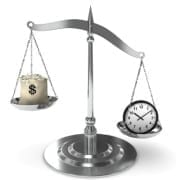How to Soften the Blow of Trading Losses in 2022 (For Beginners)

Have a Plan for All Trades
You can’t wing it when trading. Unlike the movies, it just doesn’t work that way. Maverick traders always lose money. As a result, their reputation ends up in tatters. So don’t go thinking you can approach trading without a plan. First, you must be mentally prepared to deal with the trade and how much time and money you can commit. But you also need a strategy. And there are many you can use when trading. Common trading strategies include EOD and Order Flow trading. In addition, sites like JumpstartTrading.com offer solid strategies that work at all levels.
Stick to Your Plan No Matter What
As a trader at any level, you need to begin with solid discipline. And one of the most disciplined things you can do is stick to your plan. A concrete action plan reduces the need to think too quickly about what you are doing because you have a cushion for dealing with movements. If you fail to make a plan, you can find your emotions will get the better of you. And for a trader, this only ends in disaster as you frantically chase profits to cover increasing losses. Of course, this takes time to develop as a beginner. But planning your trades lets you trade to your plans.
Soften the Blow of Trading Losses by Minimizing Risk
Shockingly, over 90% of beginner traders lose a significant amount of money early in their careers. For some, this is inherently unavoidable. However, you can cushion the blow by using a plan that seeks to minimize all risks involved. This way, the damage won’t be as bad as it could be in your crucial early days. You should develop a strategy as a trader. And your system should always include win-loss percentages and averages. Using the data available through trading software, you can avoid some of the worst disasters that could cost you dearly.
Continuously Educate Yourself
As a trader, you cannot hope for success unless you keep yourself informed and educated. Correct trading procedures are crucial. Yet there is much more to the industry than that. You also need to be aware of the latest movements in the markets, trading news, and even world events that will affect the stocks. Fortunately, this is easier than ever with new channels like Bloomberg and CNBC. And you can sign up for alerts with apps like Stock Alert. However, you should also be aware of broader economic issues like interest rates and business news.
Invest Small Amounts in Minimal Stocks
When starting out, it helps to focus on no more than two stocks in one trading session. This makes finding and keeping track of them much more accessible. For example, you could invest in fractional shares for small amounts of money as you learn how trading works. For example, you can use specific brokers to invest a fraction of a share rather than a whole share. So rather than buying a stake in Apple for $1000, you could buy one one-hundredth of a share for $10 instead. While you won’t make much money, you get a solid real-world trading experience.
Make Trade Timing a Priority
Price volatility is primarily determined by the number of trade orders when the markets open in the morning. With practice and experience, you will begin to see the patterns that allow you to make profits with careful timing early on. However, it’s best to analyze the movements of trades for the first half hour or so of the market before making any moves yourself. Therefore timing is essential. However, there is an overall pattern that can help you as a beginner trader. The markets are frantic at the opening, more stable mid-day, and more excited about closing.
Avoid Risky and Volatile Assets
All trades come with risk. However, some are far more volatile than others. Making moves on volatile stock means greater rewards. But there is a massively increased risk. So unless you have enormous amounts to lose, stay away from risky and volatile assets:
- Consider the recent colossal dip in cryptocurrency and ask if it’s a good investment.
- Diversify your portfolio if dipping into risky assets to offset losses against drops.
- Stay away from swing trading until you have the skills for deep data analysis on a trade.
- Avoid specific industries, such as:
- Oil and gas
- Limited partnerships
- Cryptocurrency
- Penny stocks
- IPOs
- Learn how to monitor your trades so you can act quickly on damage limitation.
- Don’t go all in on an emerging market that looks good on paper.
- Set aside money you can afford to lose on a risky investment as a separate venture.
- Be wary of investing in a startup that looks to be too big to fail (Theranos, WeWork).
Any trade or investment can go wrong at any time. For instance, you may have been tempted to spread $10,000 across cryptocurrencies a couple of months ago. Then you will have lost a significant amount of money a few days later. So always consider the risk of any investment.
Make Trades with a Logical Approach
Trading requires nerves of steel. Because money is involved, sometimes in massive amounts and perhaps not yours, it’s hard not to become emotional. Therefore, you need to ask yourself, “what would Spock do?”. A logical approach to trading can be a massive help when you keep your emotions in check. It’s only human to feel the pinch of greed, the gutting of fear, and the excitement of hope. But they are essentially useless for making decisions that act in the best interests of yourself or clients. This is why a plan is so helpful, so use it and stick to it.
Learn How to Analyze Trading Data
Success in trading relies on analyzing data. Modern trading software and new channels allow you to get all the data you need in real-time. But how and why would you use the data available to you? Of course, an analysis will enable you to build a strategy, formulate accurate insights and identify trading fraud at the least. But you will usually use data to make better future trades or trades in real-time. A standard method of trading data analysis is the price-to-earnings ratio. To do this, you divide an asset’s per-share market value by its per-share earnings.
Test Different Trading Strategies
Like most professional pursuits, there are many strategies for trading. And you can begin using more and more for diversification as you gain experience. However, it’s best to play it safe as a beginner. Some of the best trading strategies for beginners include New Trading, Trend Trading, and Scalping as a day trader. There isn’t much difference in the various trading strategies available to you. For the most part, the only difference is the lengths of time between movements you initially act upon or hold. Different approaches will fit your style or availability.
Soften the Blow of Trading by Hedging
As mentioned, you can use various trading strategies as a beginner, amateur, or professional. And unfortunately, there is no one-size-fits-all solution. So you need to learn how each system works to find the best one for you and your clients. Further, it helps to use multiple strategies depending on the markets. Yet no matter your proficiency, you will lose money at some point. An honest trader loses money. Fortunately, you manage risk by hedging your positions to minimize losses or increase gains when one stock moves against another, offsetting the damage.
Don’t Expect Massive Returns
Trading can be a lucrative business. However, you need to make a large investment in a short period for significant returns quickly. And in most cases, for most people, this is not feasible. Typically, wealthy people invest large amounts for potentially massive returns. However, as a beginner or day trader, you shouldn’t expect huge returns. In the USA, the average annual earnings of a professional day trader are around $75,000. As a beginner, this will be substantially lower, only increasing as you get better and improve your experience.
Understand Your Responsibility
Finally, but by no means any less important, you must understand that you alone are responsible for your trades. Becoming emotionally involved and playing the blame game after a loss doesn’t do any good. You can use all trading data available to you. But even then, things can go wrong. Yet rather than panic or become frustrated at the markets, it’s helpful to own the responsibility of the trade. Accept that it happened. Then go back and analyze your data and records to understand exactly what went wrong and where to manage future risk.
Summary
Trading is one of the most exciting jobs in the world. It’s full of drama, action, and adrenaline. In addition, trading will challenge your intellect, creativity, and real-time skills. However, it comes with the inherent risk of losing money at any time. Fortunately, you can soften the blow of trading losses by planning all trades, avoiding the riskiest assets, and learning from mistakes.













Leave a Reply
Want to join the discussion?Feel free to contribute!